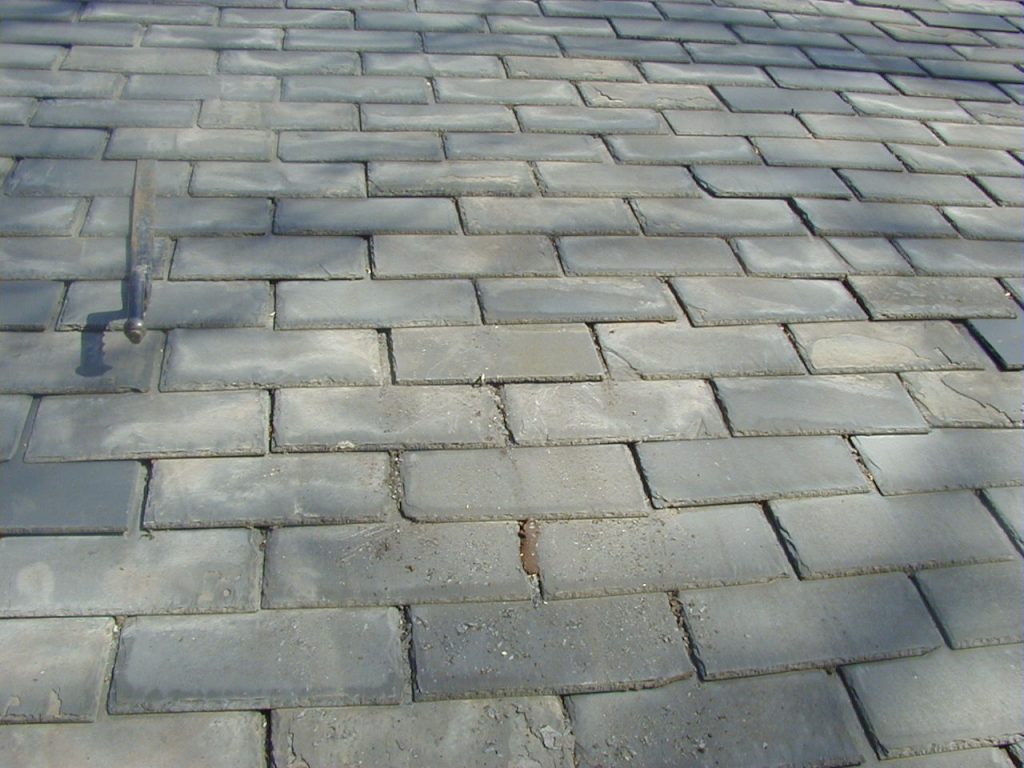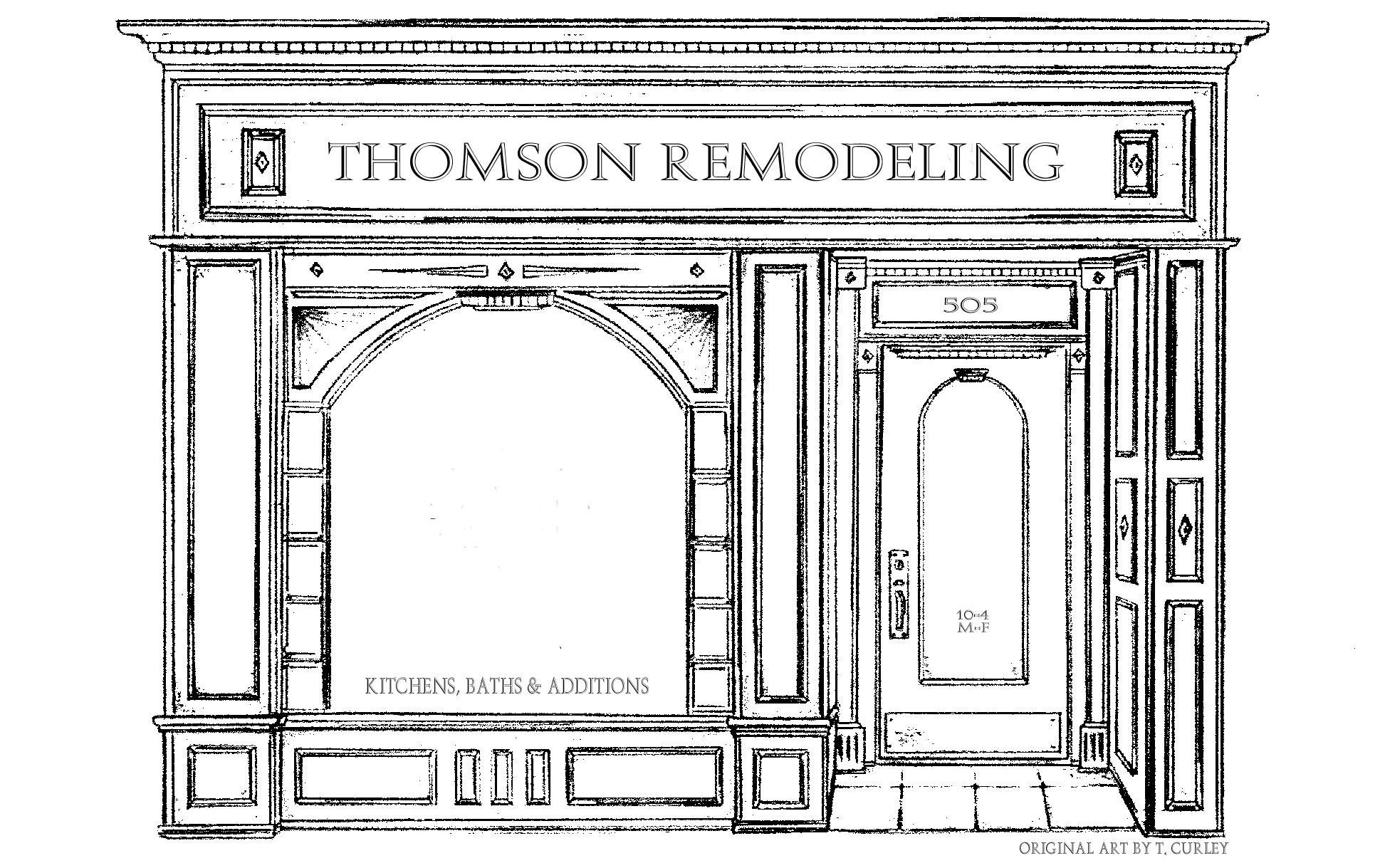How to Repair a Slate Roof
One of the unique features of a slate roof is that a slate roof is easily repairable. A slate roof is made up of thousands of individual pieces of natural slate. The combination of individual pieces of slate and separate flashing components allow repairs to be made in localized areas without replacing the entire roof.
Individual pieces of slate or areas of damaged slate can be replaced since the slates are not connected in anyway to the slates around them. This unique feature of slate (and tile) roofs makes it important not to use roof cement or tar (not to mention caulk) to repair slate roofs in areas other than at the hips or ridges.
The photograph below shows a valley coated in roof cement. The adjacent slates were also coated. Normally, when a valley is leaking, the valley metal should be removed. To do this, the slates around the valley are removed and salvaged for re-installation. In this case, slate cannot be salvaged because now they are connected to all of the slate around them making a repair more costly.

Tools
Having the right tools for the job is the first step to correctly done slate repairs. For the most basic slate repairs, a slate hammer, slate ripper and a supply of slate hooks and 1 1/2″ and 2″ copper nails are necessary.
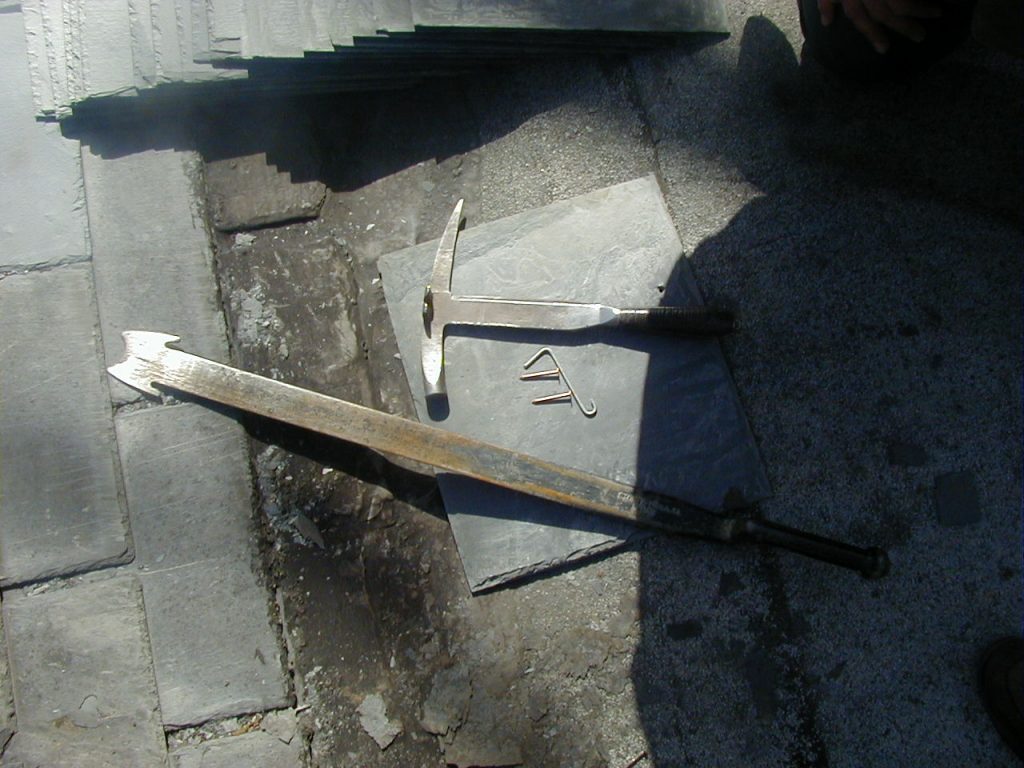
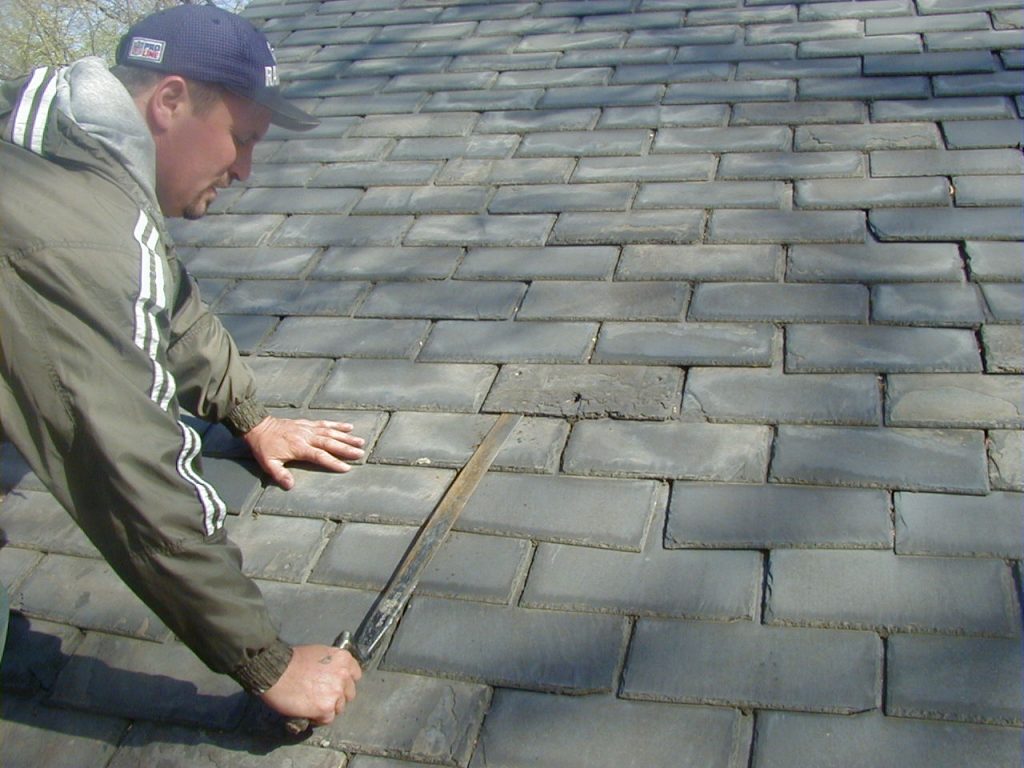
Old slate removed.
Here, debris is pulled out and disposed. The ripper is used to pull out any debris still under the other slates.
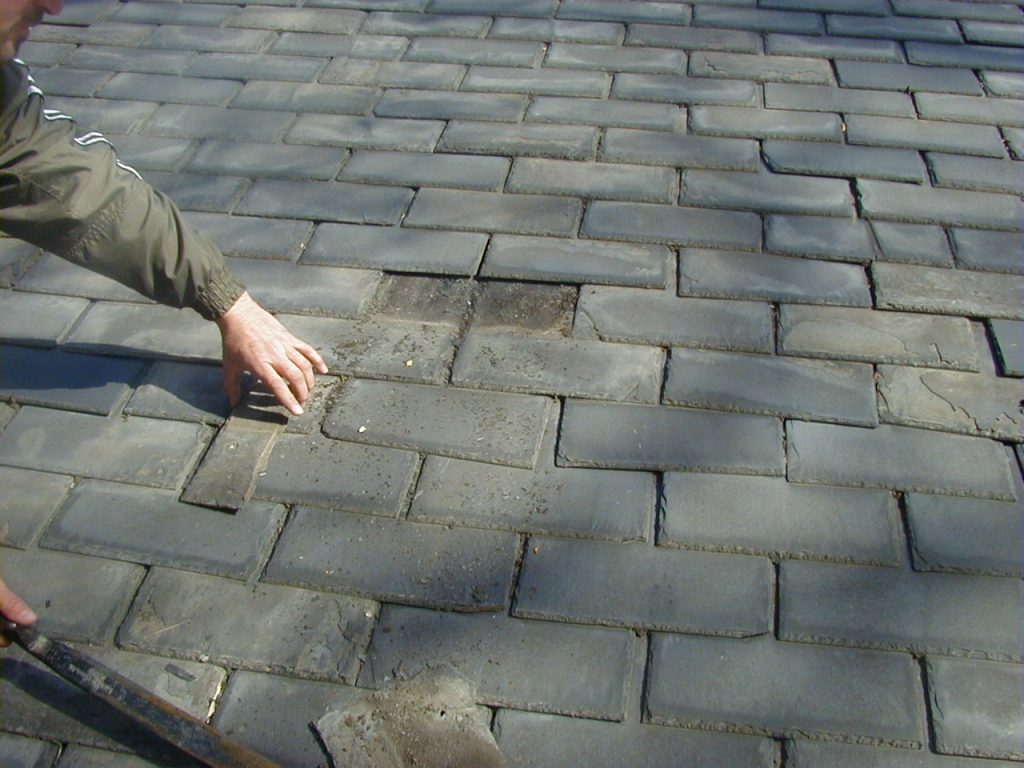
Here, a galvanized slate hook is installed. Some installers will use a stainless steel hook. We find that the stainless will remain shiny and catch the sun, resulting in an easily visible slate repair. The galvanized hooks will actually turn a dull gray and blend into the roof while at the same time, lasting for many years. Copper hooks have also been available, but they can be too soft to nail into old sheathing.
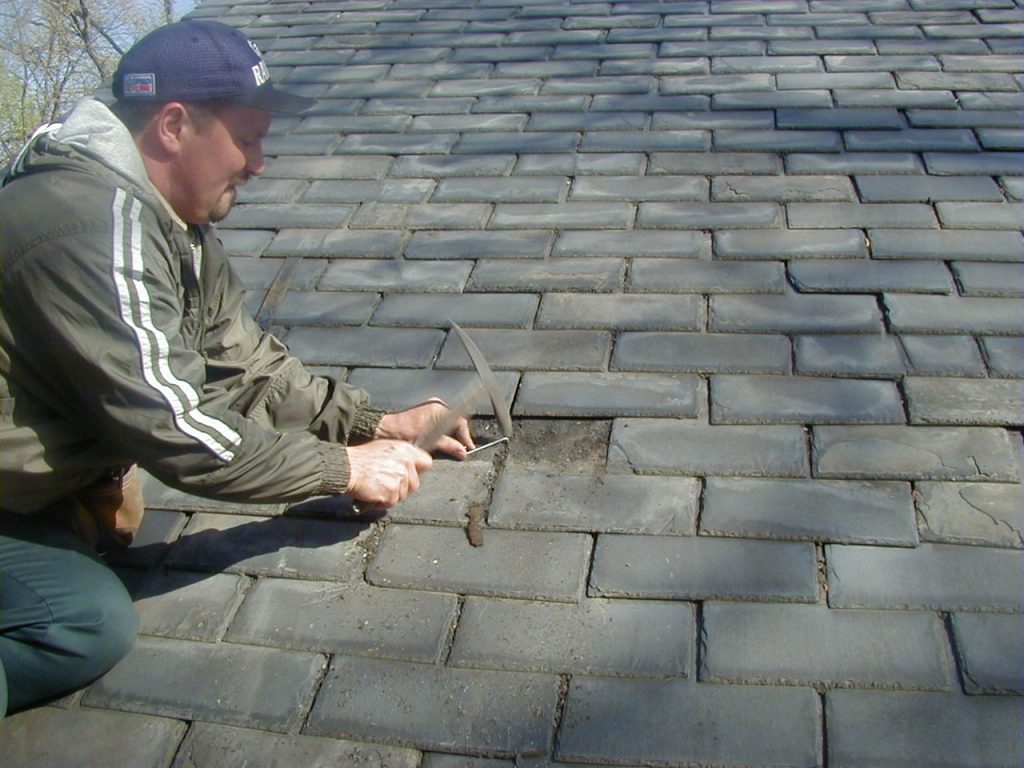
The completed slate repair. If a group of slate in a continuous area need to be replaced (above a leak for instance), the slates to the bottom of the group can be nailed and the slate few slates at the top can be hooked.
